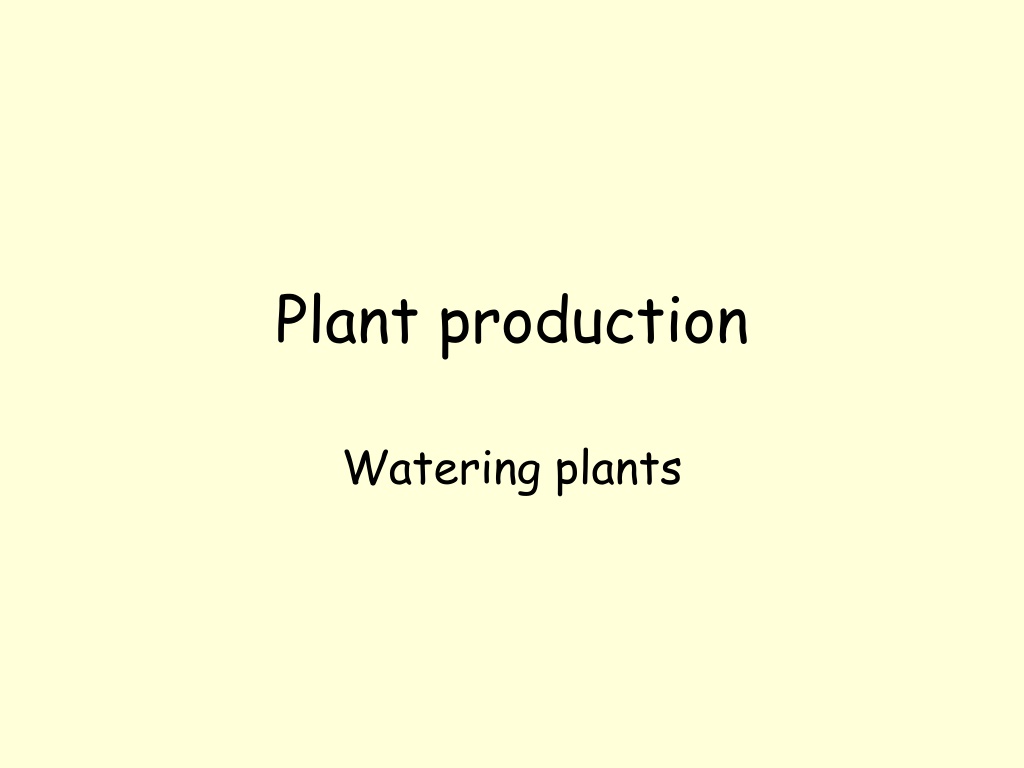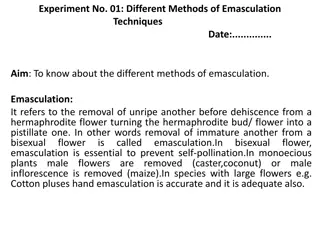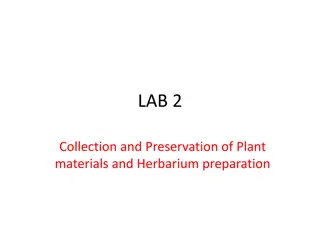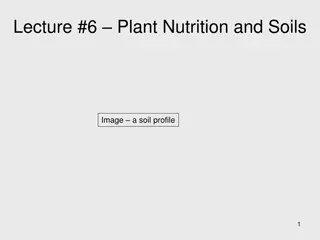Understanding Plant Watering Methods and Techniques
Plants need water to stay healthy and carry out essential functions like making food and transporting nutrients. Different watering methods include using a watering can, watering from below, using capillary matting, automatic watering systems, and misting systems. Overwatering and underwatering can harm plants, leading to issues like root rot and wilting leaves. Proper watering is crucial for plant care and maintenance.
Download Presentation

Please find below an Image/Link to download the presentation.
The content on the website is provided AS IS for your information and personal use only. It may not be sold, licensed, or shared on other websites without obtaining consent from the author. Download presentation by click this link. If you encounter any issues during the download, it is possible that the publisher has removed the file from their server.
E N D
Presentation Transcript
Plant production Watering plants
Why do plants need water? Water keeps plants upright and stops them wilting. Plants also need water to make food and to carry nutrients through them. Some plants need lots of water and others need very little.
Watering methods Most plants can be watered from a watering can, from above.
Some need to be watered from below, by standing the pot in a water filled tray for a few minutes.
Capillary matting This is a material that absorbs water and stays moist.
Pupils made this automatic watering system. Water drips very slowly out of the tube onto capillary matting, lining the tray. The plants absorb the water.
Misting Systems Misting systems produce water spraying droplets that are smaller than a human hair. Millions of these tiny droplets hit the surrounding air, "flash evaporate", and quickly reduce temperatures 25 to 35 degrees.
Underwatering plants Underwatered plants wilt, have dry, yellow leaves and dry compost.
Overwatering plants If compost or soil is waterlogged, roots are starved of air. Overwatered plants have soft, rotting or mouldy leaves and slimy compost.
This powerpoint was kindly donated to www.worldofteaching.com http://www.worldofteaching.com is home to over a thousand powerpoints submitted by teachers. This is a completely free site and requires no registration. Please visit and I hope it will help in your teaching.























